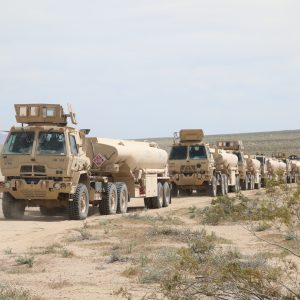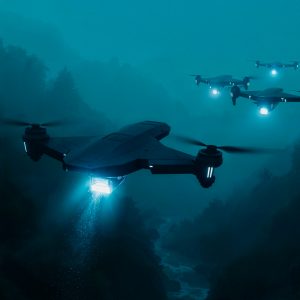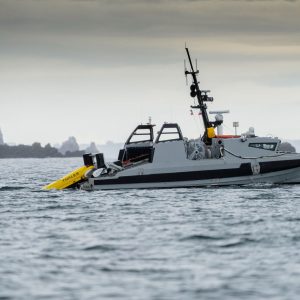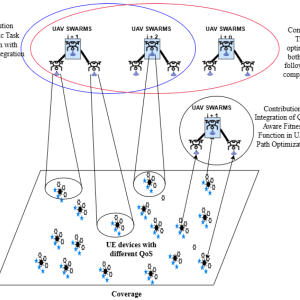Uncrewed systems are transforming how battles are fought, but they have not changed how land wars are won. Drones (UAS/UGV) deliver persistent ISR, precision effects, and tempo advantages, yet they cannot by themselves create the decisive condition in land warfare: control of territory. Against a domain-specific theory of land war centered on control, drones fail to meet the six foundational requirements—taking, retaking, clearing, holding, sealing, and protecting. Their value is therefore auxiliary and enabling, not decisive. Force developers should invest in drone-centric ecosystems that shield and empower mobile ground forces, not substitute for them.
Problem Statement
Open-source discourse often treats drones as “game‑changers” or heralds of a new revolution in military affairs. This obscures their domain‑specific limits in land campaigns and risks misdirecting procurement, doctrine, and training away from what actually closes wars: ground forces that seize and keep terrain while protecting populations.
Theory of Land War: Control as Causal Mechanism
Control—of land, people, markets, and political institutions—creates bargaining power for favorable war termination. To gain and maintain control in land wars, forces must be able to:
- Take terrain (defeat occupiers; establish control)
- Retake terrain (defeat occupiers; re‑establish control)
- Clear hostile forces from complex terrain (remove enemy; control terrain)
- Hold terrain (defeat counterattacks; sustain control)
- Seal boundaries (control nexus points; defeat penetrations/counterattacks)
- Protect populations (minimize civilian harm; maintain control)
These are situational, concurrent requirements—not a checklist.
Assessment: Drones vs. the Six Requirements
1–2. Take/Retake Terrain
- Strengths: Destroy point targets; disrupt logistics; suppress defenders.
- Limits: Cannot physically occupy or govern land; cannot deny by presence.
Finding: Fail — tactical attrition without territorial control.
3. Clear Complex Terrain (urban, subterranean, forested, mountainous)
- Strengths: Mapping, target cueing, precision strikes, and loitering interdiction.
- Limits: Defenders adapt (dispersion, deception, hardening, subterranean). Strikes alone rarely dislodge determined forces.
Finding: Fail — enables clearance, but does not accomplish it.
4. Hold Terrain
- Strengths: ISR‑strike webs can blunt counterattacks and enable economy of force.
- Limits: Holding requires persistent on‑ground presence, logistics, and governance functions that drones cannot provide.
Finding: Partial — can defeat counterattacks; cannot “hold.”
5. Seal Boundaries
- Strengths: Detection, cueing, interdiction; accelerates response.
- Limits: Continuous physical control and denial across distance/terrain still hinge on manned forces and barriers.
Finding: Partial — contributes to denial; cannot seal alone.
6. Protect Populations
- Strengths: Contribute to IAMD, strike launch sites, and persistent surveillance.
- Limits: Insufficient against massed stand‑off attacks; cannot ensure population security absent territorial control.
Finding: Fail — complements population protection; does not assure it.
Bottom Line: Drones are tactically revolutionary but strategically indecisive in land wars because they cannot deliver or sustain control.
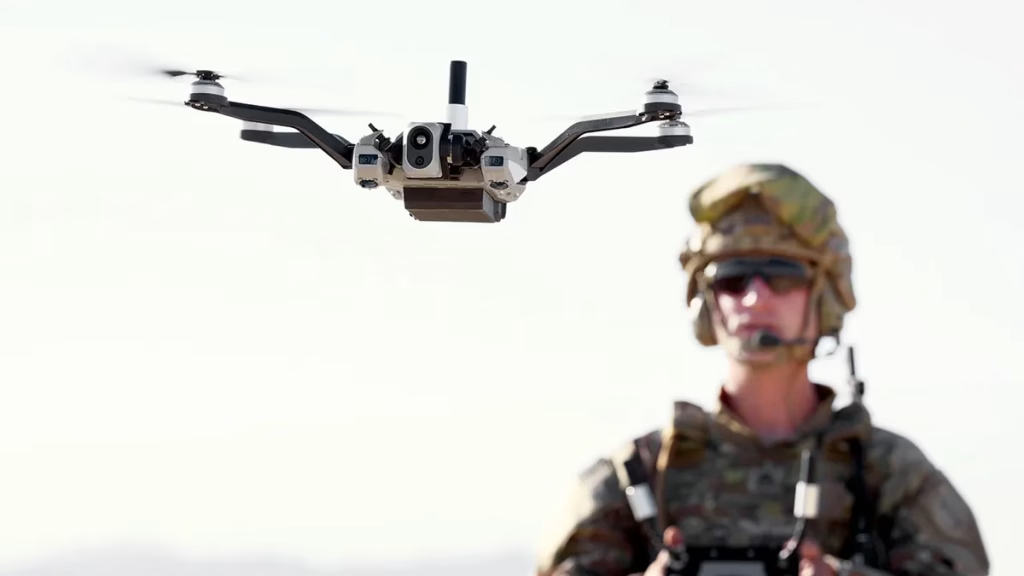
Operational Evidence (Illustrative)
- Nagorno‑Karabakh (2020): Drone efficacy magnified in a small battlespace against an ill‑prepared opponent, but outcome still reflected combined‑arms overmatch, not drones alone.
- Ukraine (2022–present): Unprecedented drone scale yields ISR and attrition effects, yet front lines remain positional. Drones extend lethality but do not produce decisive territorial change without massed, protected maneuver.
- Gaza (2023–present): Heavy drone integration supports strikes and targeting, but clearing/holding dense urban terrain still demands ground entry, with high collateral‑damage risks absent rapid, controlled seizure.
Strategic Implications
- From Maneuver to Counter‑Maneuver Pressure: Ubiquitous drone ISR/strike compresses maneuver windows, drives forces underground, and increases attrition and positional stasis.
- Air‑Ground Littoral as the New Decisive Layer: The fight for low‑altitude airspace (0–3,000 m AGL) governs whether ground forces can move, mass, and survive.
- Economy of Force, Not Force Replacement: Drones shift the cost curve for sensing/striking but cannot replace artillery, engineers, armored mobility, and infantry staying power.
Risks of Overreliance
- Doctrinal Drift: Substituting stand‑off drone strike for seizure-and-hold doctrine risks campaigns that consume resources without producing strategic leverage.
- Hollow Force Design: Lean “strike‑heavy” structures underfund protection, breaching, and sustainment—key to controlling terrain.
- Escalating Civilian Harm: Proliferated strikes in urban areas can raise political costs and undermine legitimacy when not tied to timely territorial control.
Recommendations (Policy, Force Design, R&D, Training)
Policy & Strategy
- Anchor innovation to control. Make “ability to create and sustain territorial control” the test for concepts and investments.
- Define decisive conditions up front. Tie drone employment to named ground objectives, not aggregate kill counts.
Force Design
- Build the Air‑Ground Littoral Stack:
- Layered C‑UAS/MSHORAD (guns, EW, interceptors) organic to maneuver brigades.
- Dense tactical ISR (tethered/untethered UAS, ground sensors) for 24/7 custody.
- Assured mobility suites (breaching, obscurants, rapid smoke, decoys) to cross the drone threat zone.
- Re‑weight for Staying Power: Protect artillery, engineers, EW, and armored/IFV formations that finish clearance and hold gains.
- UGV Integration: Prioritize logistics, casualty evacuation, and breaching roles first; iterate to close‑combat roles only when C2, IFF, and survivability mature.
R&D & Procurement
- Survivability First: Signature control, autonomous navigation under EW, resilient datalinks, onboard AI for autonomy under comms loss.
- Switchable Effects: Modular payloads (ISR, EW, decoy, kinetic) and attritable airframes for cost‑imposition at scale.
- Counter‑Targeting: Invest in deception (inflatable/thermal/EM decoys), rapid camouflage systems, and automated emission control.
Training & Doctrine
- Combined‑Arms Re‑centered: Drill drone‑enabled assault and clearance—UAS cueing → suppression → breach → entry teams → rapid consolidation.
- Littoral Airspace Tactics: Standardize company/battalion‑level C‑UAS battle drills and dynamic airspace deconfliction at low altitude.
- Population Protection Playbooks: Pre‑planned urban control packages (cordon plans, protected routes, sensors, curfews) to convert strikes into durable security effects.
Metrics & Indicators of Effectiveness
- Control Conversion Rate: % of drone‑enabled strikes followed by terrain seized/held ≥ 72 hours.
- Mobility Delta: Average time to breach and pass a defended obstacle under contested UAS conditions.
- Counterattack Defeat Rate: Proportion of enemy counterattacks detected, fixed, and finished by drone‑enabled combined arms.
- C‑UAS Survivability: Sortie loss rates and mean time to reconstitute local air‑ground littoral control.
- Civilian Harm Ratio: Civilian casualty and critical‑infrastructure damage per drone strike in urban operations, trended against territorial gains.
Anticipated Counterarguments & Rebuttals
- “Autonomous swarms will hold ground.” Swarms can deny and punish entry but cannot perform governance, detention, or stabilization functions required for control.
- “Precision reduces need for mass.” Precision shortens kill chains; it does not clear tunnels, secure buildings, or withstand counterattacks without ground mass and engineers.
- “UGVs will replace infantry soon.” Near‑term UGV reliability, IFF, and EW resilience remain limiting; best employment is augmentation, not replacement.
Conclusion
Drones have redrawn the character of land combat—ubiquitous sensing, rapid cue‑to‑kill, and heightened attrition—without changing the logic of victory. Strategic success still turns on territorial control, which only mobile, protected, and sustained ground forces can secure. The smart path is not “drone‑first,” but drone‑forward combined arms: dominate the air‑ground littoral to unlock ground maneuver, then convert tactical effects into held terrain and protected populations. That is how wars end on favorable terms.



